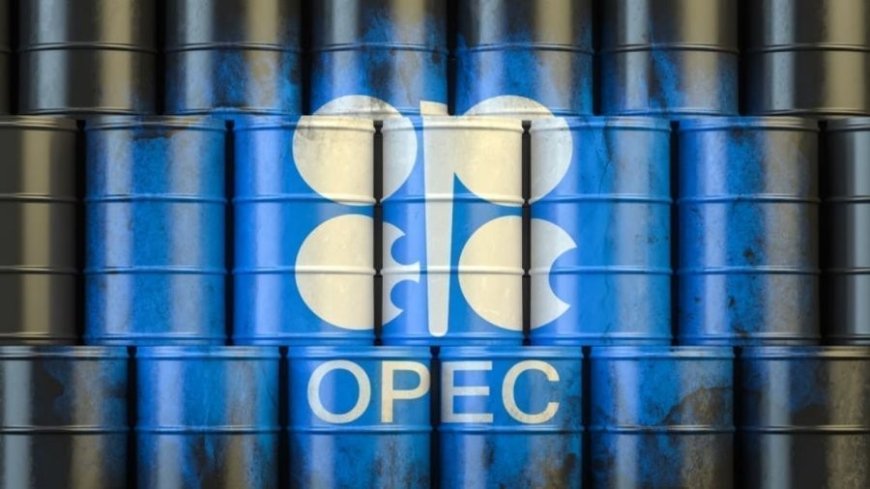Oil Titans in Turmoil: Will OPEC+ Weather the Global Economic Storm?

By: M. Sharifi
The Organization of the Petroleum Exporting Countries (OPEC), in alliance with other major oil producers including Russia, collectively known as OPEC+, holds a significant position in global energy markets, controlling nearly 40% of the world’s oil production.
This immense share grants OPEC+ considerable leverage over the global oil supply and, consequently, the pricing of this vital commodity. Central to its strategy, OPEC+ convenes regularly to deliberate on output levels, carefully adjusting production to maintain equilibrium in the market, often tipping the scale in ways that can reverberate through the world economy.
Key Drivers of OPEC+ Oil Production Decisions
A crucial factor informing OPEC+ decisions is the current state of global oil reserves. As highlighted by Reuters analyst John Kemp, data from the Organization for Economic Co-operation and Development (OECD) reveals that in June, crude oil and petroleum product inventories in developed economies were well below their ten-year seasonal average. Such dwindling reserves are a critical signal for OPEC+ to weigh in on production adjustments.
China’s economic growth also looms large in OPEC+ considerations. As one of the world’s largest consumers of crude oil, fluctuations in China’s economic performance—whether a surge or a slowdown—can significantly affect global demand for oil. In parallel, monetary policy decisions by the U.S. Federal Reserve play a pivotal role. A cut in interest rates, for instance, can stimulate U.S. economic activity, thus driving up global oil demand. However, with inflationary concerns often guiding the Fed’s hand, interest rates may remain unchanged or even increase, thereby dampening economic growth prospects and curbing oil demand. In this precarious landscape, OPEC+ must navigate with extreme caution, assessing the potential impacts of these uncertainties on future oil consumption.
The Global Oil Price Decline: A Precursor to OPEC+ Strategy?
Amid these complex dynamics, OPEC+ initially planned to increase production by 180,000 barrels per day in October, a modest contribution compared to the group's voluntary supply cut of 5.86 million barrels per day, a reduction representing 5.7% of global oil demand. This supply limitation was intended to buoy prices in the face of subdued demand and rising output from non-OPEC producers. However, the global drop in oil prices, driven by fears of a sluggish global economy and disappointing economic data from China, the world’s largest oil importer, has prompted a recalibration. In response, OPEC+ announced in a statement following a virtual meeting that the additional voluntary production increase, initially set for October, would be deferred. Instead, eight OPEC+ members agreed to extend their existing cuts of 2.2 million barrels per day until November 2024.
The Implications of Prolonged Supply Curtailments
While the decision to extend production cuts offered immediate relief by boosting global oil prices, it raises a host of longer-term risks. Chief among them is the potential erosion of OPEC+ market share. Non-OPEC producers such as the United States, Canada, and Brazil have ramped up their production, posing a credible competitive threat should OPEC+ persist with its conservative output policy. Moreover, there remains the ever-present risk of internal discord within OPEC+, as individual members, motivated by national interests, may breach their production quotas, thereby undermining the collective’s ability to regulate the market effectively.
A Precarious Path Ahead
As autumn approaches, OPEC+ stands at a critical juncture. Initially poised to increase production, the alliance has opted instead for a cautious extension of its current supply limits, signaling prudence in an uncertain global economic climate. The coming weeks will be decisive for the group’s future strategy. Their next move will not only shape the trajectory of global oil markets but also serve as a litmus test for OPEC+’s ability to navigate an increasingly volatile and unpredictable economic landscape.
In this high-stakes environment, OPEC+ must balance short-term price stability with the long-term imperative of maintaining its grip on the global oil market. Whether they can do so without sacrificing market share to rising non-OPEC competitors remains to be seen. Nonetheless, the decisions taken in the months ahead will indelibly shape the energy market’s future and the role OPEC+ plays in it.













































